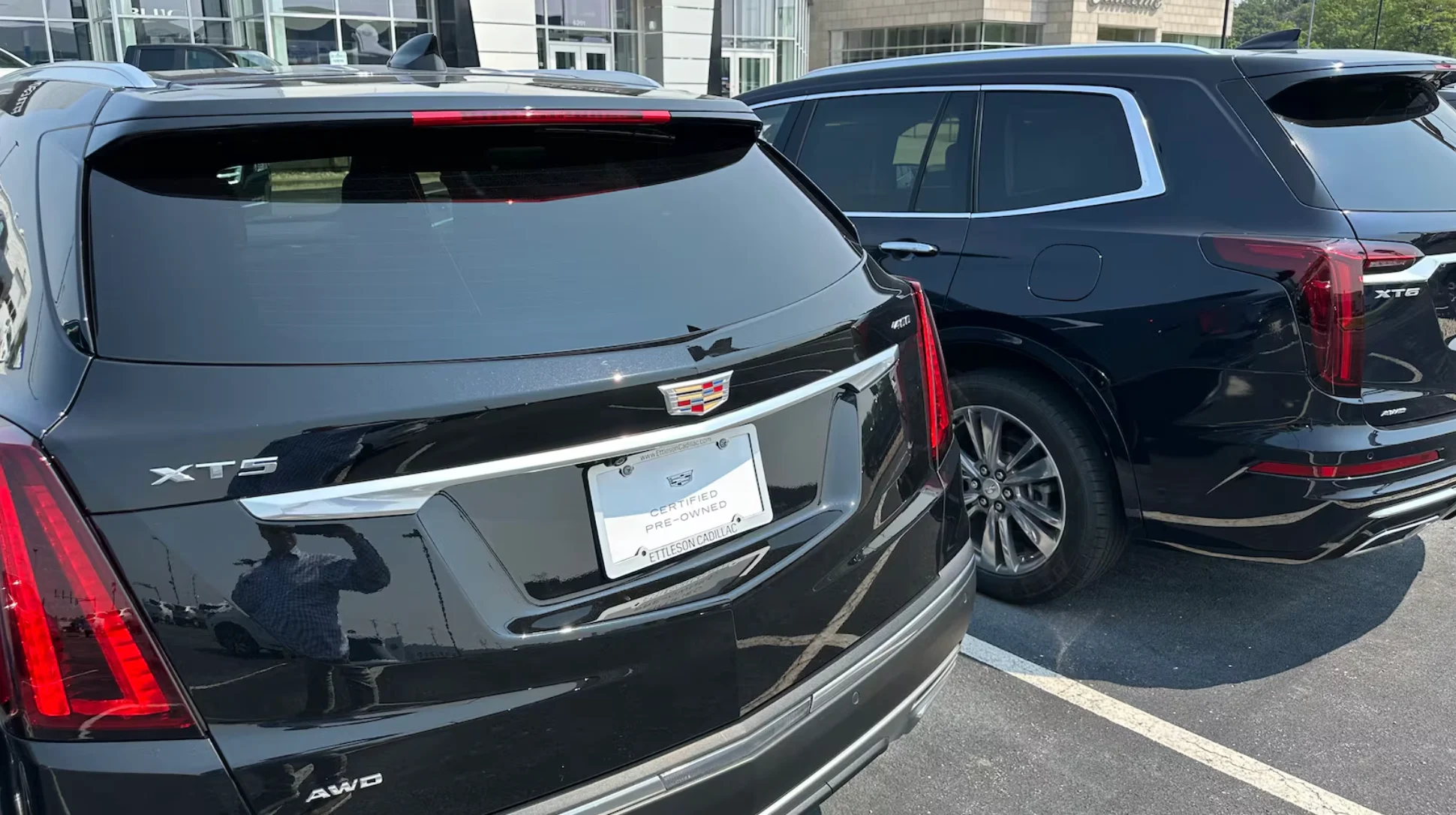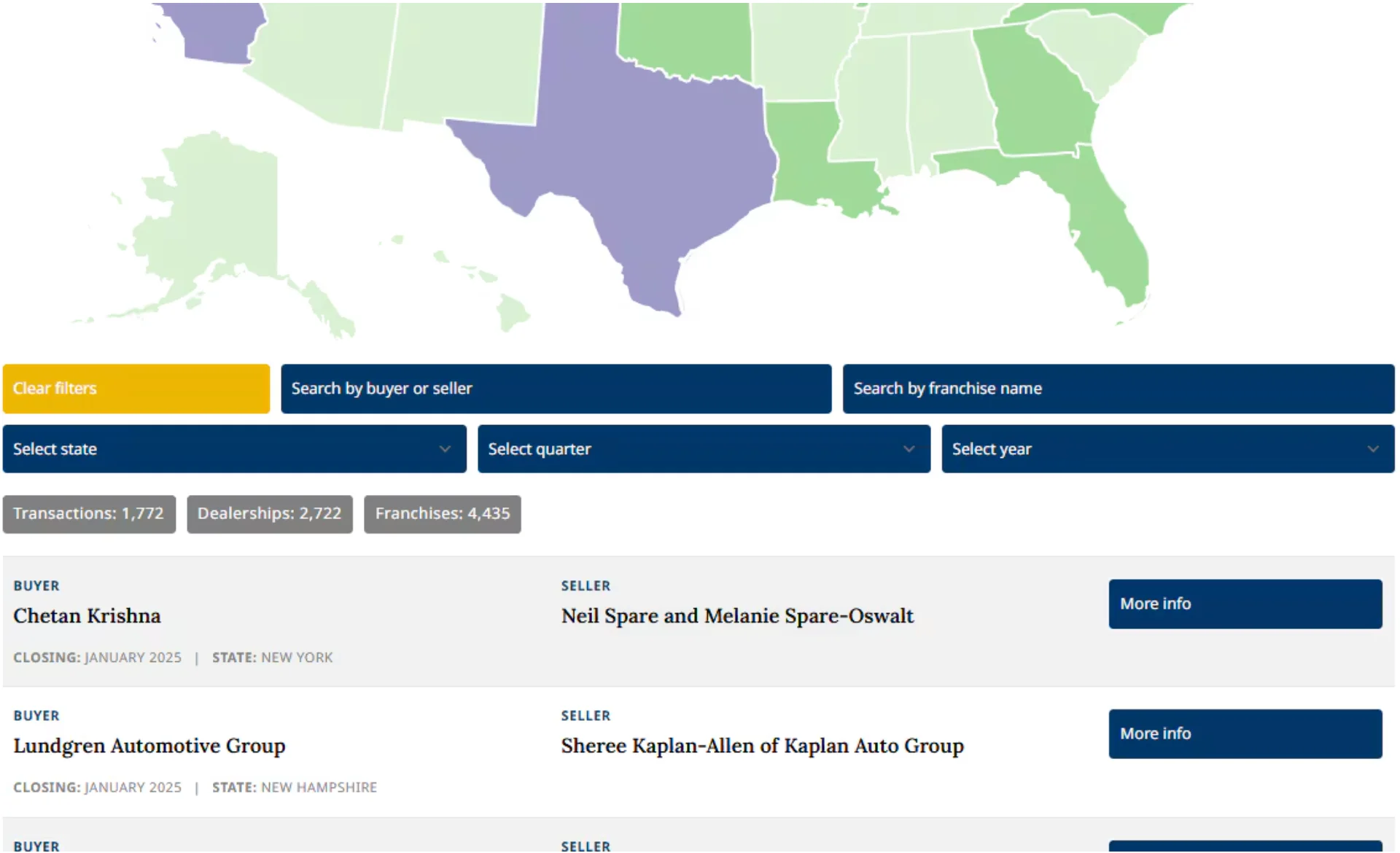
The share of auto retailers that own five or fewer franchised light-vehicle dealerships continues to decline, while those operating six or more stores is on the rise — a trend for more than a decade, according to the National Automobile Dealers Association.
As of June, 90.7 percent of all new light-vehicle dealers owned one to five stores, down 0.7 percentage points from the same time last year and down from 95 percent in 2014, according to the NADA Data 2025: Midyear Report released in October.
The number of dealers who owned six to 10 stores grew by 0.5 percentage points year over year, accounting for 5.8 percent of all new light-vehicle dealerships. That segment showed the largest increase.
The second-largest growth was in the number of dealership operators that own 11 to 25 stores, up 0.2 percentage points to account for 2.8 percent of new light-vehicle dealerships. The number with 26 to 50 stores also grew, to 0.6 percent from 0.5 percent last year.
NADA Chief Economist Patrick Manzi said in a statement to Automotive News that he expected dealership consolidation to continue this year, citing the “quest for greater economies of scale across dealership groups of all sizes” as a key driving factor.
“Total dealership counts are increasing after bottoming out in 2020,” said Manzi. “And single-point and small groups of stores continue to decline, while the midsize and public dealership groups continue to expand their operations.”
Mike Sims, president of dealership buy-sell advisory firm Pinnacle Mergers & Acquisitions, of Southlake, Texas, said he expected dealers who own fewer than five stores will continue to represent the majority of dealerships, but that the number in that category will decrease each year.
“More and more, this business requires economies of scale,” Sims said. “It’s harder to compete on an expense basis with the larger competitors when you have one to five stores.”
Sims said he thinks all retailers, especially those that own 11 to 25 stores, are more likely to grow with help from institutional capital such as family offices and private equity.
“That’s going to be one of the engines that helps fuel the growth,” Sims said. “Once somebody has 25 stores, they may not need that capital, but some groups in the six-to-10 range may need the outside capital to go from eight stores to 25 stores.”
The vast majority of new light-vehicle dealership operators — 90.7% — owned 1 to 5 stores as of June. That figure has dropped each year since 2014, when it was 95%. The percentages of dealers operating 6-10, 11-25, 26-50 and 50-plus stores have increased.


Erin Kerrigan, managing director of sell-side advisory firm Kerrigan Advisors in Incline Village, Nev., said she expected dealership consolidation to accelerate, especially in growing metropolitan markets.
Kerrigan said that in the first half of 2025, her analysis of buy-sell transactions found 65 percent involved dealers expanding in one of their existing markets.
“The emphasis is on having regional dominance,” Kerrigan said. “Dealers are emphasizing growing share in their existing market in an effort for regional consolidation because regional consolidation has the most opportunity to increase efficiency, increase scale and with that, profitability.”
Kerrigan said technology plays a role in the trend.
“As technology becomes a bigger factor in our operations, there is even more opportunity to increase efficiency with AI such that you reduce your fixed expenses, and the larger your platform is in the market, the greater efficiencies, the greater profitability,” Kerrigan said.
This Automotive News feature lists dealership acquisitions as reported by brokers, official announcements and news media.See our list of buy-sells and submit details of your deals here.

The total number of new-car dealerships as of June 30 was 16,972, up from 16,936 the same time a year earlier, the NADA report said. That 36-store uptick was driven by open points in growth markets and the fact that not many dealerships went out of business, Kerrigan said.
“The market’s still relatively strong across the board for new-car sales,” she said. “You’re not going to see the number of franchises shrink until we have a recession.”
Kerrigan said retailers on Automotive News’ list of the top 150 dealership groups based in the U.S. in 2024 represented 27 percent of new-car dealerships. She estimated those groups control about a third of industry revenue, up from an estimated 25 percent in 2019.
If that rate of increase continues, Kerrigan estimates the top 150 retailers will represent the majority of the franchised industry’s total revenue in just 15 years.
“The largest consolidators are buying the highest-volume stores in every metro, and they’re employing tools to ensure their rooftops are growing in sales and gaining market share,” Kerrigan said.
Kerrigan Advisors is the leading sell-side advisor and thought partner to auto dealers nationwide. Since its founding in 2014, the firm has led the industry with the sale of more than 300 dealerships generating more than $10 billion in client proceeds, including two of the largest transactions in auto retail history – the sale of Jim Koons Automotive Companies to Asbury Automotive Group and Leith Automotive to Holman. The firm advises the industry’s leading dealership groups, enhancing value through the lifecycle of growing, operating and, when the time is right, selling their businesses. Led by a team of veteran industry experts with backgrounds in investment banking, private equity, accounting, finance and real estate, Kerrigan Advisors is the only firm in auto retail exclusively dedicated to sell-side advisory, providing its clients the assurance of a conflict-free approach.
Kerrigan Advisors monitors conditions in the buy/sell market and publishes an in-depth analysis each quarter in The Blue Sky Report®, the industry authority on dealership buy/sell market trends and valuations and includes Kerrigan Advisors’ signature blue sky charts, multiples and analysis for each franchise in the luxury and non-luxury segments. To download a preview of the report, click here. The firm also releases The Kerrigan Index™ comprised of the seven publicly traded auto retail companies with operations focused on the US market. The Kerrigan Auto Retail Index is designed to track dealership valuation trends, while also providing key insights into factors influencing auto retail. To access The Kerrigan Index™, click here. To read the 2024 Kerrigan Dealer Survey, click here. To read the 2025 Kerrigan OEM Survey, click here. Kerrigan Advisors also is the co-author of NADA’s Guide to Buying and Selling a Dealership.
Contact us to learn more about Kerrigan Advisors’ sell-side services.
All of our conversations are 100% confidential.